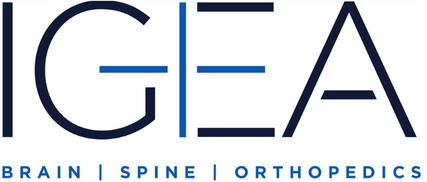NEUROVASCULAR DISEASE CAN CHANGE YOUR LIFE IN A HEARTBEAT
Our arteries are like the roots of a tree. They supply and nourish our brain and spine with rich nutrients and oxygen-rich blood transported directly from the heart. Any type of obstruction in the arteries, however, can lead to serious, even deadly, neurovascular disease.
Neurovascular disease is characterized by a dangerous abnormality found within a blood vessel of the brain or spine. Narrowing or weakening of the arteries, for example, are occurrences that prompt ischemic and hemorrhagic strokes, two of the most common neurovascular conditions to affect the population. In fact, you may personally know or know of someone who has suffered a stroke.
Aside from strokes, other conditions, such as arteriovenous malformations (AVMs), can alter the course of your life in an instant. If ever faced with neurovascular illness, discover what our IGEA neurosurgeons can do to reroute your life back to normalcy. Your health and well-being is our entire focus and vision.
EXPLORE NEUROVASCULAR MALFORMATIONS
ANEURYSMS
Localized point of danger in which a balloon-like abnormality, or vascular lesion, manifests due to swelling or weakness in the walls of the artery. Rupture can lead to serious bleeding and possibly death. Sudden severe headache, nausea and vomiting are immediate warning signs of an aneurysm. Linked to genetic factors or acquired diseases such as high blood pressure (HBP) and atherosclerosis.
ARTERIOVENOUS FISTULAS (AVF)
An unnatural passageway in an artery and vein in the layers encompassing the brain and spinal cord (e.g., dura mater, arachnoid). Irreversible damage to the brain and spinal cord is initiated from pressure buildup in the venous system as blood continues to bypass capillaries, flowing directly from an artery into a vein through a fistula.
ARTERIOVENOUS MALFORMATION (AVM)
A defect in the circulatory system that starves the brain and spinal cord of normal oxygen levels. Two primary neurological symptoms are seizures and headaches that compromise the brain’s vital structures. Spinal AVMs prompt severe back pain attacks, often at the roots of nerve fibers. Hemorrhage from high-velocity blood flow can lead to serious health complications, possibly death.
CAROTID ARTERY STENOSIS
Progressive narrowing of the carotid arteries which are found on either side of the neck, coursing up to the brain. Caused by atherosclerosis, a condition in which plaque (fatty deposits) builds up along the inner portion of the artery and constricts blood blow to the brain. Plaque hardens and deforms arteries, completely blocking this flow. Transient ischemic attacks (TIA) and mini-strokes are the first signs of trouble.
CAVERNOUS MALFORMATIONS
Represent 8-15% of all intracranial and spinal neurovascular malformations. Visible lesion anomalies designed by abnormal number or structure of blood vessels. Blood begins to leak from affected vessels from lack of muscle and elastin support. Genetic predisposition (runs in the family) is thought to be a known cause. Symptoms include vision loss, seizures and difficulty swallowing.
MOYAMOYA DISEASE
Rare progressive cerebrovascular disorder in patients with head trauma and Down Syndrome, for example. Blood clots formed in the constricted and thickened walls of the brain’s internal carotid arteries, causing reduced blood flow which lead to strokes and TIAs. Warning signs include limb paralysis, speech problems, headaches and weakness.
STROKE
Cerebrovascular accident (CVA) in which blood flow and oxygen to the brain stops, causing sudden brain cell death and permanent brain damage. Is the 4th leading cause of death in the United States. Symptoms include one-sided body paralysis, memory problems and difficulty with speech. Diabetes, HBP and a family history of stroke are known risk factors.
DISCOVER INNOVATIVE NEUROSURGICAL TECHNOLOGY
CYBERKNIFE® RADIOSURGERY
Non-invasive robotic radiosurgery system. An alternative to neurosurgery, this knifeless stereotactic technology delivers localized high-dosage beams of radiation to cancerous and noncancerous tumors of the brain and spine.
BALLOON ANGIOPLASTY
Treats carotid stenosis, strokes and aneurysms. A catheter with a tiny balloon attached at the tip is led into a narrowed blood vessel in the brain and inflated to dilate the artery and free it of plaque to increase blood flow.
REVASCULARIZATION SURGERY
Brain revascularization restores normal blood flow to damaged areas of the brain, such as where an aneurysm occurred. Treats Moyamoya disease, skull-based tumors and cerebral ischemia.
TISSUE PLASMINOGEN ACTIVATOR (IV TPA)
Medication, also called a thrombolytic agent, which dissolves blood clots intravenously (IV). Used to treat strokes caused by blood clots, known as ischemic strokes, or brain attacks, as a noninvasive alternative to neurosurgery.
THROMBOLYTIC THERAPY
Procedure called thrombolysis used in the immediate treatment of strokes. Much like IV tPA, it breaks up life-threatening blood clots by way of medication.
EXTRACRANIAL TO INTRACRANIAL (EC-IC) BYPASS
Neurosurgical procedure used to connect a branch of the external carotid artery to a branch of the internal carotid artery to restore blood flow to the brain after an ischemic stroke.
EVERY MINUTE COUNTS
IGEA neurosurgeons bring highly sophisticated and revolutionary surgical technology to the residents of New Jersey and beyond. Our objective is to watch you walk out a renewed person, touched by improved health for long-term success and a great life. If you or a loved one suffers from neurovascular disease, please call our main office at 866-467-1770 or submit your contact information.

